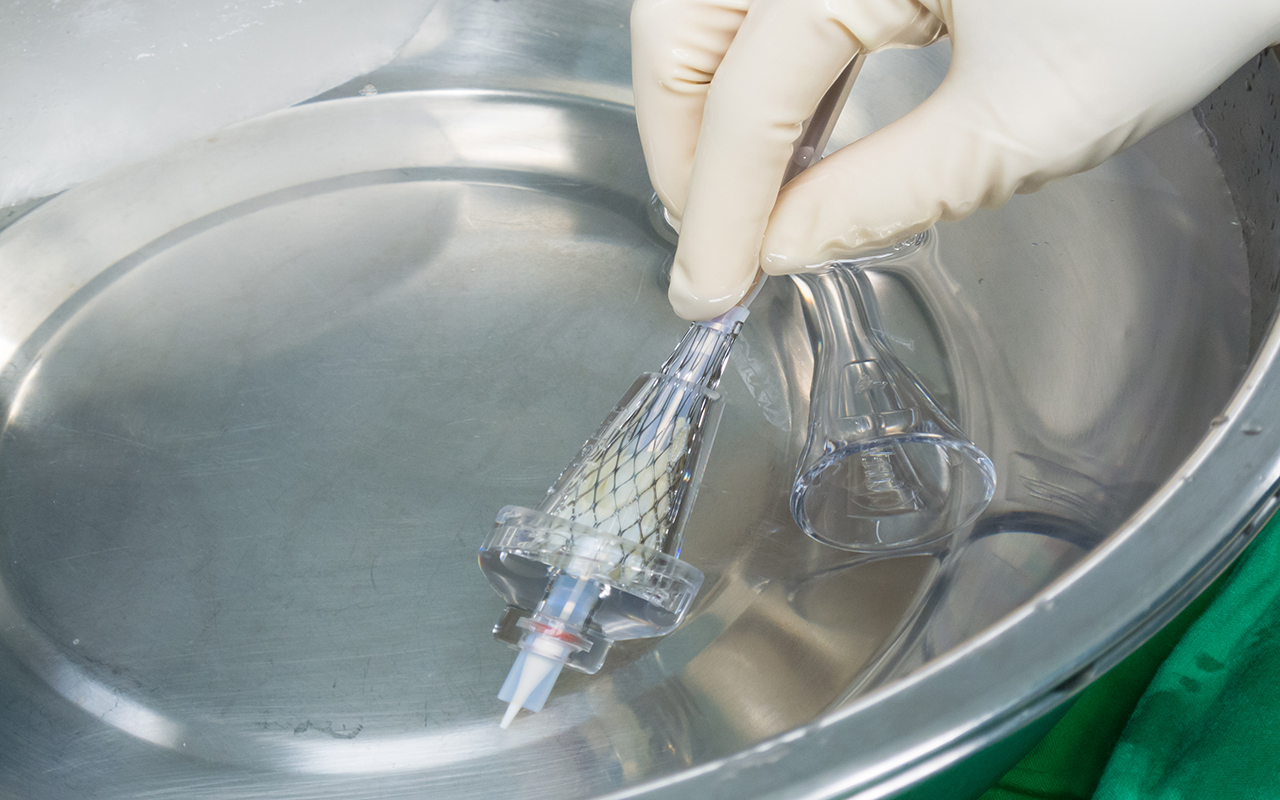A NEW standard of care for transcatheter aortic valve implantation (TAVI) has widened the preferred treatment strategy to include intermediate surgical risk patients with aortic stenosis (AS), according to the authors of a narrative review.
The introduction of a Medicare Benefits Schedule reimbursement is “likely to see TAVI use grow exponentially in Australia over the next 5 years”, wrote Dr Adam Nelson and colleagues, from the Royal Adelaide Hospital, in the MJA.
AS is the most common valvular lesion requiring intervention in the developed world, including Australia. Surgical aortic valve replacement (sAVR) became the gold standard treatment for AS, with proven long term positive outcomes and low peri-operative risk. However, at least one-third of patients are considered too great a risk for surgery, and another 10% refuse it because of the operative morbidity.
TAVI, in which “a stented bioprosthetic valve is inserted via a catheter and implanted within the native valve, leaving the native leaflets in situ but pushed out of the way,” was first performed in 2002, and first performed in Australia in 2008. Today, about 90% of cases are inserted via the femoral artery.
“Our best understanding of present TAVI volume in Australia comes from industry estimates that about 50 TAVI procedures occurred in 2008 and over 1000 are expected to occur in 2018 (personal communication, Scott Graham, Edwards Lifesciences),” Nelson and colleagues wrote.
“For the past 3 years there has been a yearly growth of 30–40%, with over 30 sites in Australia now running TAVI programs.
“Modern day care following TAVI is minimalist, with most patients returning from the procedure suite with little more than an intravenous cannula and cardiac telemetry,” Nelson and colleagues wrote. “Length of stay is rarely longer than 72 hours, with increasing numbers of patients in our institution discharged the day after TAVI.”
Two trials, the Placement of Aortic Transcatheter Valves (PARTNER) 1B and PARTNER 1A, established TAVI as treatment of choice for patients considered at prohibitive and high surgical risk.
Now, according to the narrative review authors, two more recent trials — PARTNER 2A for a balloon-expandable valve, and SURTAVI for a self-expanding valve — have favoured TAVI for patients with AS at intermediate surgical risk as well.
“Indications for TAVI will continue to grow as trial populations expand and valve durability is confirmed,” Nelson and colleagues wrote.
“Almost 10 years after the first implant in Australia, the Medical Services Advisory Committee recommended the institution of a Medical Benefits Schedule item number, making the procedure rebatable and thus more accessible to patients and providers, both public and private.”
In terms of off-label indications for TAVI, the authors pointed out that younger patients with failed bioprosthetic surgical valves, not only in the aortic but also mitral and tricuspid valves, could be treated with TAVI. The PARTNER 2 Valve-in-Valve Registry trial showed that valve-in-valve procedures performed in 365 patients with failed bioprosthetic surgical valves were associated with an impressive 30-day all-cause mortality and stroke rate of 2.7%, modest paravalvular leak in 1.9% and all-cause mortality of 12.4% at 12 months.
Prosthesis durability will become an issue as TAVI uptake increases in Australia in younger patients, Nelson and colleagues wrote.
“Implantation into younger, less comorbid individuals will reduce the level of competing risk for death, and subsequently test prosthesis durability.”
At the other end of the spectrum, they wrote, questions of futility will become increasingly important.
“As TAVI becomes more available and less technically challenging, an increasing focus of the heart team is to identify patients for whom the procedure may be futile — whether we can perform TAVI is rapidly being replaced with whether we should,” they wrote.
“Futility is defined by the combination of two criteria: the lack of medical efficacy judged by the physician, and a lack of meaningful survival as judged by the patient.
“The assessment of futility, therefore, is inherently value driven and requires critical physician–patient–family engagement, particularly with respect to understanding the potentially dynamic health care goals of patients and their families.
“With the advent of TAVI-specific risk scores and improved quantification of frailty, recommending good palliative care in the face of futility will become a critical part of any robust structural heart team,” they wrote.
“Further intra-procedural and device-related improvements should continue to drive the technology into the future and ultimately see TAVI become the gold standard for most patients with AS.”
To find a doctor, or a job, to use GP Desktop and Doctors Health, book and track your CPD, and buy textbooks and guidelines, visit doctorportal.

 more_vert
more_vert
Thanks for good news. Having my TAVI later this week.